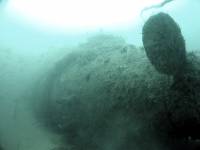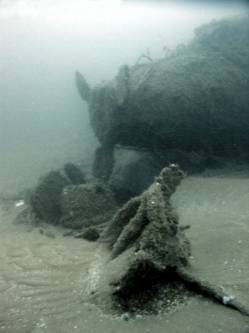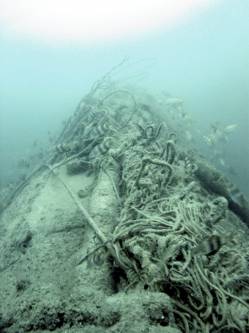The site was discovered by local diver Gerry Dowd in 1995, and in 2001 the Archaeological Diving Unit was mobilised to carry out a remote survey of the wreck using sidescan sonar following which they made the recommendation for designation.
HMS/M Holland V was one of the Holland class of submarine, the first commissioned by the British Admiralty to keep up with the times, it was launched on 10th June 1902 for the cost of £35,000. The dimensions of the HMS/M Holland V series were length 19.46 metres, Beam 3.61 metres and Draught 3.05 metres. It would have carried 7 crew members and had an armament of 1x14 inch torpedo tube in the bow with a capacity to carry 3 torpedoes.
The Holland boats were successful in exercise however they were quickly superseded by an improved class and by 1912 the boats were no longer of use to the navy. The HMS/M Holland V sank on 8th August 1912 'near Beachy Head' when the towing cable parted on the way to Sheernes.
The wreck of the HMS/M Holland V remains remarkably intact, having lost only smaller external fittings and fixtures. These detached fittings are lying on the seabed in the immediate vicinity of the wreck. The wreck is undergoing degradation due to metal corrosion, with the bulk of the upper casing already gone The site was designated as a protected wreck site in 2005. English Heritage now administers the wreck and the site licensee monitors the site.
Wessex Archaeology's Diving Investigations
In 2007 Wessex Archaeology conducted a condition survey of the wreck, and noted that the chain for the marker buoy was in danger of coming into contact with the wreck and causing damage to it. Whilst on the site Wessex Archaeology's divers obtained a large amount of photographic data which show the extent to which the site is under threat from fishing nets that have become entangled with the wreck. A copy of the full report of Wessex Archaeology's investigations can be downloaded as a .pdf below. INSERT PDF REPORT LINK INSERT_MAP


